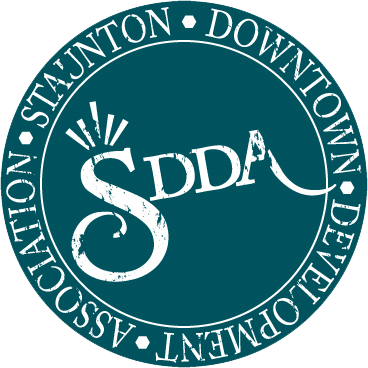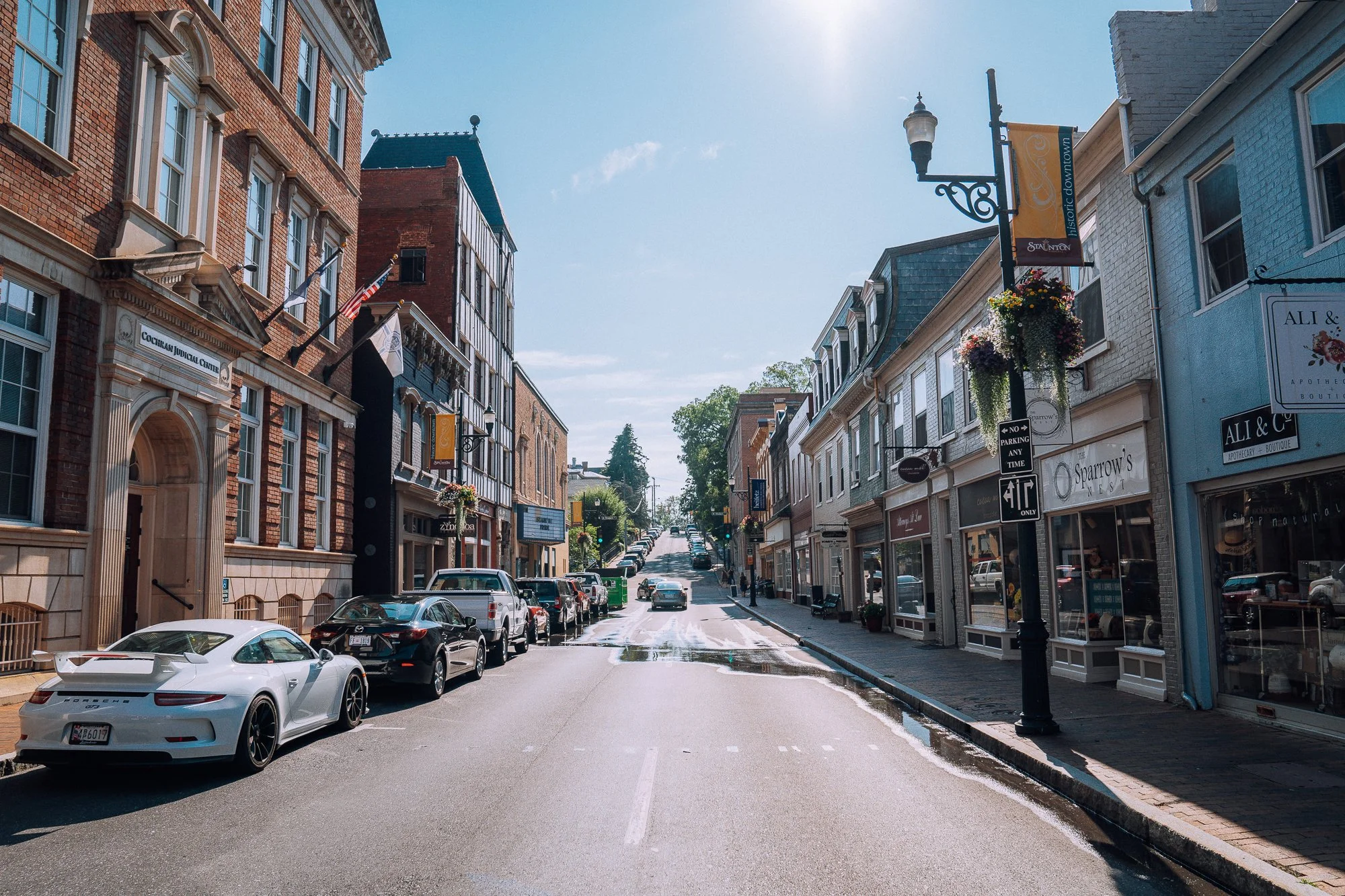Summer Strolls in Staunton’s Historic Districts
There’s no better way to experience Staunton than on foot. This summer, take a stroll through some of Staunton’s nationally recognized historic districts—each one full of rich architecture, history, and picturesque views. Here’s an insider tip: stop by the Staunton Visitor Center and pick up a self-guided walking tour map and get ready to be a tourist in your town.
1. Beverley Historic District: The Heart of Downtown
Staunton’s bustling core, the Beverley Historic District, is a vibrant mix of 19th-century architecture, charming storefronts, and cultural attractions. Recognized by Forbes as one of the best-preserved downtowns in America, this area features Queen Anne, Romanesque Revival, and Italianate-style buildings.
Don’t Miss:
Hotel 24 South – Staunton’s tallest historic structure, built in 1924 in Colonial Revival style
Located next to Hotel 24 South is the American Shakespeare Center’s Blackfriars Playhouse – the world’s only re-creation of Shakespeare’s indoor theater
Marquis Building (2–4 E Beverley St.) – Romanesque Revival architecture by T.J. Collins
The iconic Clocktower Building (1890)
You Belong Here Mural
And don’t skip out on the many eclectic shops, coffeehouses, restaurants, tasting rooms and antique stores
Explore the Beverley Historic District
2. Newtown Historic District: Staunton’s Oldest Neighborhood
Newtown is Staunton’s earliest residential neighborhood, dating back to the 18th century. An eclectic array of homes in Federal, Greek Revival, and Victorian styles flanks its tree-lined streets.
Don’t Miss:
Trinity Episcopal Church – 1855 Gothic Revival church with Tiffany stained-glass windows and labyrinth
Stuart House (120 Church St.) – Early Classical Revival home with Jeffersonian elements
Stonewall Jackson School (217 W. Beverley) - Staunton’s first permanent public school, remodeled in 1913 by T.J. Collins. President-elect Woodrow Wilson watched a parade here in his honor in 1912.
Explore the Newtown Historic District
3. Gospel Hill Historic District: Grandeur and Gardens
This district is known for its stately homes, lush gardens, and deep roots in the African American community. It’s one of Staunton’s most elegant neighborhoods, filled with Italianate mansions, Classical Revivals, and Colonial Revival homes.
Don’t Miss:
Kalorama (19 S Market St.) – Circa 1810 former girls’ school with panoramic views
Woodrow Wilson Birthplace (The Manse) – Greek Revival house and presidential museum
Mary Baldwin University – founded in 1842
4. Wharf Historic District: Staunton’s Railroad Roots
Once the city’s industrial hub, the Wharf District has transformed into one of the most atmospheric areas of downtown. Its historic warehouses and railroad buildings now house restaurants, breweries, and boutiques.
Don’t Miss:
C&O Train Station – Charming early 20th-century depot still serving Amtrak
White Star Mill - now known as Mill Street Grill, is a historic mill repurposed for dining
Sears Hill Bridge & Woodrow Park – Scenic overlook accessible via footbridge over the tracks
Augusta County Courthouse – An anchor point for multiple districts
Redbeard Brewing, Ox-Eye Vineyards, Cider from Mars, and other businesses inside converted warehouse spaces

